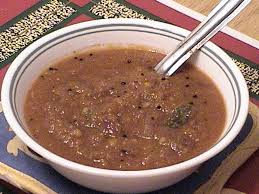ONE should adopt a sensible approach to food and not starve or deprive oneself of nutrition. A healthy breakfast provides a good start to a busy day — not with gnawing hunger in an empty stomach leading to frustration, stress, poor performance and a justification to indulge in junk food. Here are some nutritious, low calorie breakfast recipes, which are not only filling but easy to prepare.
1 ) Steamed rava idlis with onion chutney (Serves 6)
Ingredients:
Rava (sooji or semolina) 2 cups
Thick curds 2 cups
Water 1 cup
Chopped cabbage 1 cup
Chopped carrots 1 cup
Peas 1 cup
Oil 2 tbsps
Eno fruit salt 1½ tsps
Salt ¾ tsp
Mustard seeds ½ tsp
Chopped green chilli 1
Chopped ginger ½ tsp
Method:
Heat oil in a pan, add the mustard. When it splutters add rava and fry till it becomes light gold. Remove and cool. Then mix with curds, water, salt, fruit salt, green chilli and ginger into a smooth batter.
Grease idli moulds lightly with a little oil, sprinkle some of the cabbage, carrot and peas into each mould, top with the batter and steam for 15 minutes and serve hot with onion chutney.
Note: Cabbage reduces the risk of cancer, and is rich in beta-carotene and vitamins, A, C and E. Carrots help prevent strokes and heart diseases. Carrot juice helps strengthen the heart and prevents constipation.
* * *
2 ) Onion chutney
 Ingredients
Ingredients
Chopped large onions 3
Dry red chillies 4
Oil 1 tbsp
Channa dhal (kadalae paruppu) 1 tbsp
Tamarind size of a pea
Salt ½ — ¾ tsp
Mustard seeds ½ tsp
Hing a pinch
Method
Fry the red chilli, channa dhal and onions in ¾ tbsp of oil until the onions turn light brown. Cool and grind along with salt, tamarind and six tablespoons of water into a smooth paste. Transfer into a dish.
Heat the remaining oil in a pan, add the mustard and hing powder. When the mustard splutters pour over the chutney paste.
Note: Onion helps in thinning of the blood.
* * *
3) Nutritious rice balls (Serves 6)
Ingredients
Grated carrots 4 cups
Rice rava 2 cups
Grated coconut ½ cup
Water 3 cups
Oil 2 tbsps
Mustard seeds 1 tsp
Urad dhal (black gram) 1 tsp
Channa dhal 1 tsp
Salt ¾ tsp
Chopped ginger 1 tsp
Chopped green chillies 1 tsp
Method
Heat oil in a pan, add the mustard and both the dhals and fry till the mustard splutters. Add the green chillies and the ginger, fry a bit. Add the salt and water. Allow the water to boil, add coconut and the rice rava, stir till the batter becomes dry. Remove from flame and allow to cool.
Mix in the grated carrots and make moderate sized balls from the mixture.
Steam in an idli cooker for 10 minutes. Serve hot with sambar or with garlic tamarind sauce.
To make rice rava: wash rice, drain well and spread on a towel to dry.
Put the rice in a mixer and run dry for a second. Two cups of rice will get you two cups of rice rava).
* * *
4 ) Garlic tamarind sauce
Ingredients:
Garlic 10-12 flakes (chopped)
Dry red chillies 2 (broken into halves)
Tamarind size of a lemon
Oil 2 tbsps
Jaggery powder ½ tbsp
Rasam or sambar powder 1½ tsps
Salt 1¼ - 1 tsp
Mustard seeds 1 tsp
Method:
Soak tamarind in 1½ cups of water, squeeze well and strain the juice. Heat oil in a pan, add the mustard and the red chillies. When the mustard splutters, add the garlic and a teaspoon of chopped curry leaves. Fry till the garlic is light gold.
Add the rasam or sambar powder, and fry till you get an aroma, pour in the tamarind water, salt and jaggery powder, simmer till thick.
One teaspoon of rice powder, mixed with ½ cup of water, helps thicken and produce more of the sauce. Serve with rice balls.
Note: Garlic prevents heart attacks, breaks up cholesterol in the blood vessels, thus helping in the prevention of hardening of arteries which leads to high blood pressure and heart attacks.
* * *
5 ) Power puha (Serves 6)
Ingredients:
Puha (aval or rice flakes) 2 cups
Chopped onions 1 cup
Grated carrots 1 cup
Fresh moong sprouts 1 cup
Chopped capsicum ½ cup
Coarsely powdered ground nuts ½ cup
Grated coconut ½ cup
Chopped green chillies 2
Oil 2 tbsps
Cumin seeds (jeera) 1 tsp
Salt ¾ to 1 tsp
Sugar 1 tsp
Chilli powder ¾ tsp
Turmeric powder ¼ tsp
Lime ½
Method:
Wash and drain the puha. Heat oil in a pan, add the jeera. When it splutters, add onions, green chillies, capsicum and groundnuts and fry till the onions become light gold. Mix in the puha, chilli, turmeric powder, salt and sugar. Stir in the carrots, sprouts and lime juice. Serve immediately.
Note: Sprouts have the maximum nutrition when compared to other foods.
* * *
6 ) Samba Rava (Dalia) Porridge (Serves 6)
Ingredients:
Fine samba rava 1 cup
Milk 2 cups
Water 2 cups
Bananas (ripe) 2
Deseeded dates10
Honey 6 tbsps
Raisins 2 tbsps
Peeled and chopped almonds 2 tbsps
Method:
Soak the raisins in water over night and drain. Cook the samba rava in water and milk till it is well cooked, stirring all the time. Add a little water or milk if it becomes too thick. Add dates and keep aside. When slightly cool, mix in the honey, the chopped bananas, the raisins and the almonds. Serve in bowls. Sugar can be added as required.
If you don't want a sweet porridge, cook the rava in three cups of water and one cup of milk. When cold, mix in salt and curds as required and serve with any pickle or chutney of your choice.
Note: Samba rava is extremely wholesome and nourishing and is recommended for the diabetic person.
Honey has unique nutritional and medicinal properties.
By USHA BAIL











